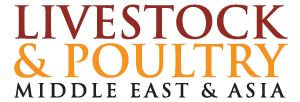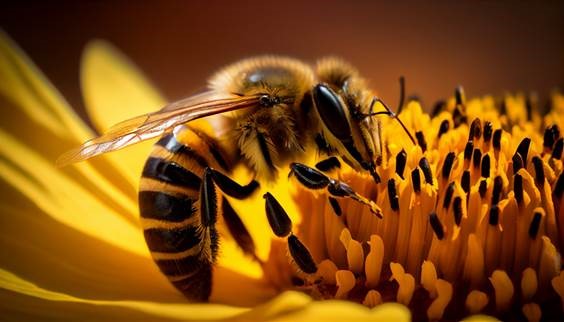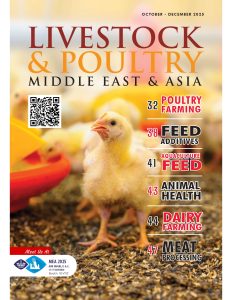Honey bees play a vital role in agriculture and the food supply chain by pollinating crops, yet bee populations have been declining in many parts of the world. This is creating strong interest in apiculture – the practice of beekeeping and honey production. In fact, the global apiculture market size is projected to grow from $10.3 billion in 2022 to reach $15.3 billion by 2032, expanding at a compound annual growth rate of 4% during this period.
Apiculture involves bee colony maintenance for harvesting various products like royal jelly, bee pollen, propolis, and honey, widely used across industries. Growing consumer awareness propels product use, particularly honey, with high global per capita consumption. Honey’s medicinal use influences dietary habits, and apiculture byproducts find applications in pharmaceuticals, soaps, and cosmetics. Rising demand, especially in North America, Europe, and the Asia Pacific, fuels commercial beekeeping. Support from organizations promotes organic agriculture, boosting the organic honey market.
Several key factors are fueling the growth of the apiculture industry worldwide:
- Increasing Awareness of Benefits of Honey and Other Bee Products: There is rising consumer demand for natural sweeteners and growing awareness of the health and medicinal benefits of raw honey, propolis, royal jelly, beeswax, and bee pollen. Research indicates antioxidant, anti-inflammatory, and antimicrobial properties. The popularity of these bee products is driving apiculture market expansion.
- Growth in Supplements and Personal Care Industries: Bee ingredients like honey, propolis, and royal jelly are increasingly being used in nutritional supplements as well as in personal care products like skin creams, soaps, shampoos, and lip balms. Large players in these industries are displaying great interest in integrating bee products into new offerings.
- Loss of Bee Colonies and Increased Beekeeping Efforts: Colony collapse disorder and loss of habitats have led to declining bee populations. Government environmental conservation efforts often include measures to protect pollinators. There is also rising hobby beekeeping and professional beekeeping to counter colony losses and increase honey production capacity. New players are entering the apiculture industry, from small backyard beekeepers to large commercial operations.
- Advancements in Apiculture Automation Technologies: Several startups and established manufacturers are developing new automated hive monitoring solutions, precision feeding techniques, integrated sensors, AI, and mobile apps to make commercial-scale beekeeping more efficient, productive, and less labor-intensive. Investor funding and R&D in these areas is surging. Market-ready technologies as well as innovators will impact industry growth.
- Rising Incidences of Bee Sting Allergy: While most bee stings cause minor reactions, some people can suffer severe, potentially fatal allergic reactions. Diagnosis and proper treatment of bee venom or honey bee allergy requires allergy tests, venom immunotherapy, and emergency epinephrine injections. The healthcare burden from bee sting allergy is increasing, which indirectly spurs spending in the apiculture space from research institutions and producers of allergy medicines and treatments.
Apiculture Market Opportunities:
The apiculture market isn’t just about harvesting honey; it presents a hive of opportunities across various industries. As consumer awareness regarding apiculture products continues to soar, the demand for royal jelly, bee pollen, and other derivatives is experiencing a parallel surge. Commercial beekeeping is poised to play a pivotal role in meeting the escalating demand, especially from the cosmetic and medicinal sectors. The cost-effectiveness and low maintenance associated with apiculture rearing make it an attractive venture, further fueling the industry’s growth.
Crucial Factors Influencing the Industry’s Future:
- Global Pollination Crisis: The decline in natural pollinators has led to an increased reliance on managed honeybee colonies for crop pollination. This crisis has spurred a growing demand for apiculture products and services, creating a unique opportunity for market expansion.
- Rising Awareness of Environmental Sustainability: As consumers become more environmentally conscious, there is a notable shift towards supporting sustainable practices. Apiculture, with its positive impact on biodiversity and ecosystem health, is well-positioned to benefit from this trend.
- Innovations in Hive Technology: The integration of technology in beekeeping practices, such as smart hives and data analytics, is enhancing efficiency and productivity. These innovations not only attract tech-savvy beekeepers but also open new avenues for market growth.
Competitive Landscape:
The apiculture market’s competitive landscape is marked by key players employing various strategies to generate new growth opportunities. Acquisition, collaboration, novel product launches, portfolio expansion, partnerships, and agreements are among the key strategies adopted by these players to maintain a competitive edge in the industry.
Leading manufacturers in the apiculture products sector include Wild Forest Honey, Forest Essentials, Zizira, Roses&Tulip, Betterbee Inc., and Beehive Botanicals Inc.
In September 2021, Amul Honey introduced a new product through GCMMF (Gujrat Cooperative Milk Marketing Federation Ltd.), demonstrating active collaboration with the National Bee Board (NBB).
Hilltop made a notable entry into the market in 2021 by launching an original apiculture lip balm. This product, enriched with natural emulsifiers, aims to replenish and hydrate lips while offering protection against UV rays. The launch aligns with the growing consumer preference for natural products, contributing to the establishment of a market for such offerings.
These insights are based on a report on Apiculture Market by Fact.MR.





















